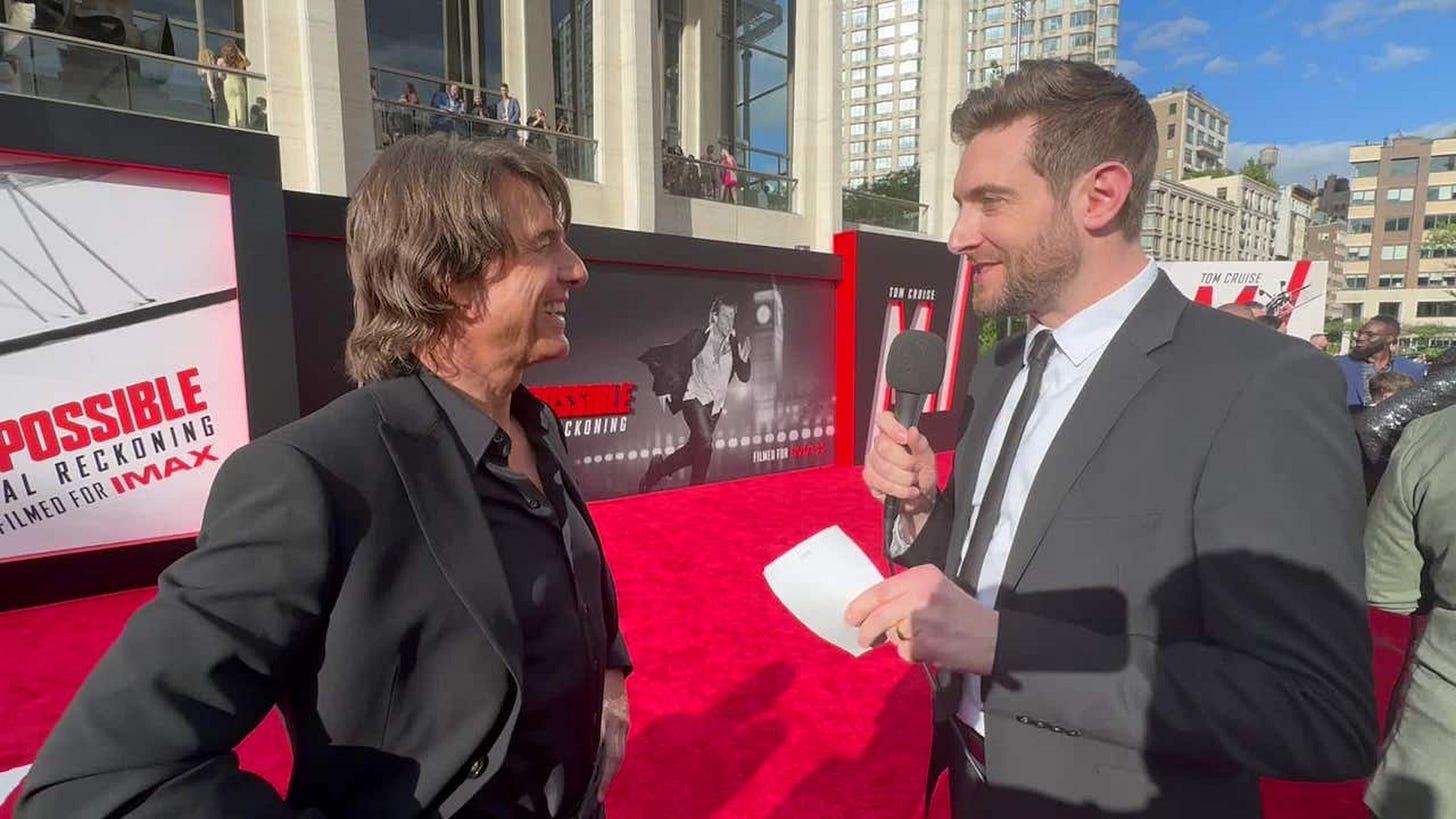Is TikTok Saving Cinema?
A few words about social synergy
This post is currently available in full to paid subscribers only.
It’s easy to look at new developments on the social media frontier and decry them. By now, it’s quite clear that for whatever gains we’ve received by giving ourselves over to The Apps, society has not fared well. Yesterday, though, I was scrolling through TikTok, as I sometimes do—TikTok is not one of my addictions, but it remains easy to get lost in it for a half hour at a time every few days—and I came across a video of critic and broadcaster Kevin McCarthy talking to Nick Offerman on the Mission: Impossible – The Final Reckoning red carpet. The five-minute chat is a good one, with Offerman offering his feelings about the theatrical experience, old-school special effects, learning to be patient for opportunities as an actor, his Oscars bit with Conan O’Brien, and more. At the end of it, Offerman shakes McCarthy’s hand and remarks, “Thank you for the intelligent questions, they’re very refreshing in this setting.” IN THIS SETTING.
Red carpet interviews are bullshit. The lowest of the low in terms of star-fuckery and and vapid questions. There’s not enough time, the situation is too hectic, and the only reason anyone’s really there is for the publicity photos. In that setting, as talent, to be asked genuinely thoughtful questions must be such a treat. The clip has 200,000 likes on TikTok, and plenty more on Instagram Reels. The appeal of the clip is odd, because it’s not a fast-paced, entertaining interview. Offerman isn’t asked to do goofy nonsense or mug for the camera. It’s got none of the usual appeals to social media virality that constitute common marketing wisdom in the year 2025. Yet it works, and it penetrates, and it’s for the same reason Offerman himself was surprised and impressed. Here’s a journalist/content creator on a red carpet, clearly a real movie fan, bursting with love for Hollywood and cinema, asking real questions in an earnest way, without any condescension. McCarthy, a local news guy, has that plucky, dweeby, local news charm that above all else is inviting. Watch enough of his videos talking to actors and filmmakers and it’s hard not to feel like the characters onstage at CinemaCon in The Studio finale, chanting, “Movies! Movies! Movies!” Who’d have thought? Movies!
Memorial Day 2025 was a true blockbuster weekend. Record-breaking revenue across a slate of offerings, both studio and independently produced, titles big and small. It was a victory for the movie business and theatrical exhibition, but also variety. There were movies for everyone. A huge Tom Cruise stunt show, a nostalgia-baiting Disney kids remake, a sensational original vampire movie, a weird comedy for sickos, a wild horror movie for sickos, a conservative-coded sports comeback drama, even a Marvel movie. I won’t pretend all of these—or any of them, perhaps—are the height of what cinema can offer, but they cover a wide range of what it does offer the mainstream moviegoing public. The question for years now, particularly post-pandemic, has been: does the mainstream moviegoing public still exist?
This, I believe, is the wrong question. The wrong premise, in fact. It assumes that moviegoing, as a habit and an activity, is some binary aspect of identity. But movies didn’t always exist. They were invented, and then an audience was formed. And that audience changed over time. Their expectations changed. When the movie theatre was your only place to get filmed entertainment, along with filmed news, human interest stories, and travel documentaries, of course they brought in absurd percentages of the population. TV ate into that, but so have other forms of media over time, and at this point the competition is obviously extreme. So where do movies, and specifically moviegoing, fit into this? To answer that, we first need to come to terms with what movies do offer people, and what they can offer. If it’s just a matter of good, filmed entertainment, well, that’s not nearly enough. There’s plenty of that out there, in much more easily consumable packages than a two hour film. The way I see it, the two hour-ish package of a movie has its own artistic merits, but as an experience, cinema thrives on the mass part of mass entertainment. When movies have been important in culture, it’s when they’ve been at their most central to the social aspects of society. In 2025, movies do not generally occupy that space, but look to the success of Sinners, and Final Destination Bloodlines, and any number of other surprising hits over the last couple of years, and an answer begins to form.
People are hungry for movies, for cinema, for movie theatres. They’re demonstrating that hunger. It’s a hunger most people probably don’t even know they have, but it’s there, that longing for a specific kind of social connection the movies are best at. It can be reduced down to the water cooler, but it’s more than just having something to shoot the shit about. Movies are something to be a part of, but in order to get back to that reality, the hunger for them needs to be stoked and fed.


